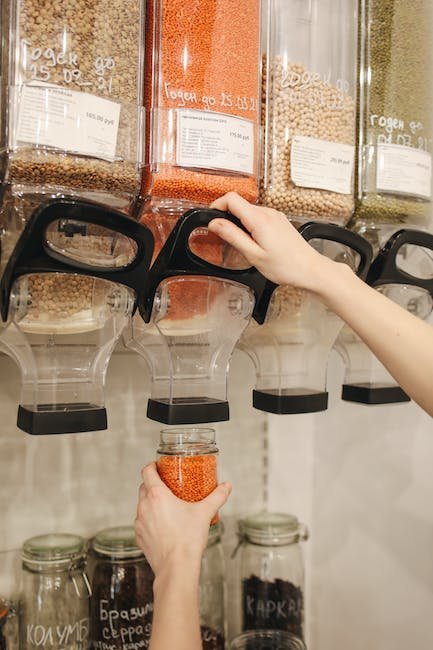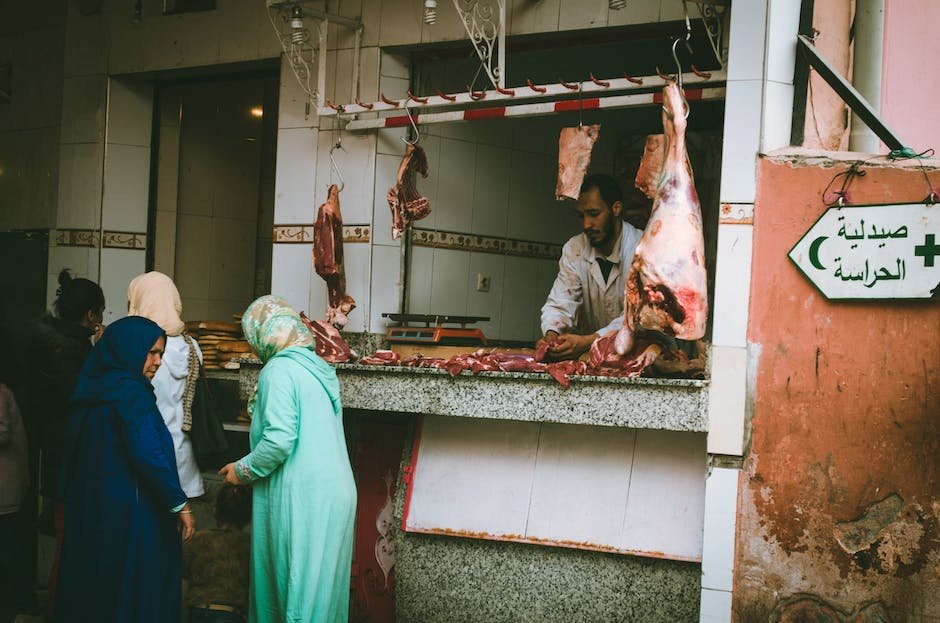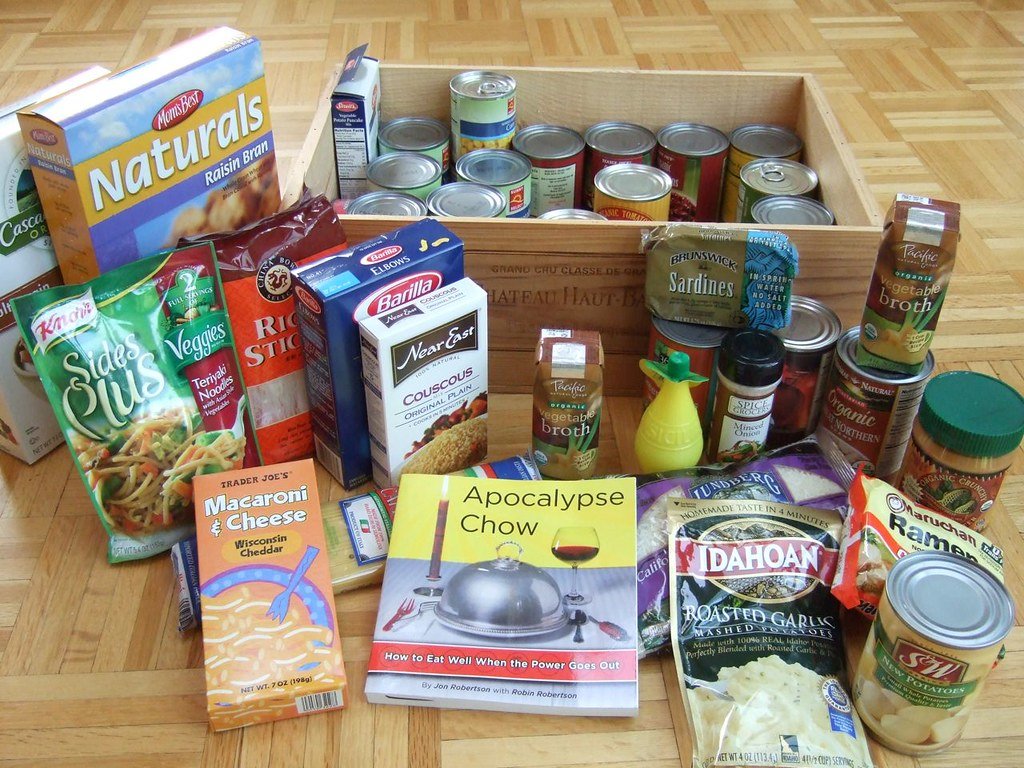Now Reading: How to Store Legumes for Longevity
-
01
How to Store Legumes for Longevity

How to Store Legumes for Longevity
Legumes, the unsung heroes of the culinary world, hold within them a reservoir of nutrition and flavor. From vibrant red kidney beans to earthy lentils, these humble legumes have long been valued for their versatility and health benefits. Whether you are an avid legume connoisseur or a curious beginner, one question inevitably arises: how can we prolong the lifespan of these magical little wonders? Fear not, dear reader, for in this article, we shall uncover the secrets of storing legumes to ensure their longevity, preserving their vibrant colors, and capturing their delightful textures. Join us on this culinary adventure as we delve into the world of legume preservation, uncovering techniques that will not only extend their shelf life but also keep these nutritional powerhouses ready for your next gastronomic escapade. Together, let us embark on a journey to conquer the challenge of legume storage, one bean at a time!
Table of Contents
- Choosing the Right Container and Location for Storing Legumes
- Maintaining Optimal Conditions to Prolong Legume Shelf Life
- Effective Methods to Keep Legumes Fresh and Free from Pests
- Proper Handling and Preparation Techniques for Legume Storage
- Q&A
- Closing Remarks

Choosing the Right Container and Location for Storing Legumes
Container Options
When it comes to storing legumes, choosing the right container is essential to maintain their freshness and prevent spoilage. Here are a few container options to consider:
- Glass jars: Ideal for shorter-term storage, glass jars provide an airtight and transparent solution to keep legumes fresh while allowing easy visibility.
- Plastic containers: Made from durable materials, plastic containers are lightweight and offer airtight seals, making them perfect for long-term storage.
- Vacuum-sealed bags: These specialized bags remove air from the package, creating a tight seal that helps to preserve the flavor, quality, and texture of the legumes.
Choosing the Perfect Location
Aside from selecting the right container, finding the perfect location for storing legumes is equally important. Here are some factors to consider:
- Temperature: Legumes thrive in cool and dry environments, so it is advised to store them in a cool pantry or cupboard away from direct sunlight or extreme temperature fluctuations.
- Avoid moisture: Moisture adversely affects the texture and quality of legumes. Therefore, ensure that your chosen storage location is dry, as any exposure to moisture can lead to mold or mildew growth.
- Away from strong odors: Legumes easily absorb surrounding odors. It’s essential to store them away from pungent spices, cleaning chemicals, or any other strong-smelling substances that can alter their natural taste.
By selecting the appropriate container and storing legumes in an optimal location, you can extend their shelf life while ensuring they delight your taste buds in your future culinary creations!

Maintaining Optimal Conditions to Prolong Legume Shelf Life
Legumes are a versatile and nutritious staple food that can be stored for long periods when proper conditions are maintained. To ensure the longevity and quality of legumes, it is crucial to take specific precautions. Here are some essential tips to extend the shelf life of legumes:
1. Proper Storage:
- Store legumes in airtight containers to keep moisture out and prevent insect infestations.
- Keep the storage area dry, dark, and cool to inhibit the growth of microorganisms.
- Avoid storing legumes near strong-smelling substances as they can absorb odors.
2. Regular Inspection:
- Regularly check for signs of spoilage, such as discoloration, insect presence, or foul smells.
- Discard any legumes that show signs of mold or unusual texture.
- Rotate your stock by using older legumes first to ensure freshness.
3. Efficient Handling:
- Avoid excessive handling of legumes as it can lead to breakage and loss of quality.
- Keep legumes away from direct sunlight to prevent fading or drying out.
- When cooking legumes, follow proper procedures to prevent overcooking, which can impact their texture and taste.
Taking these measures will help in maintaining optimal conditions for storing legumes, allowing you to enjoy their nutty flavor and nutritional benefits for an extended period. Remember, storing legumes properly is an investment in your pantry and a pathway to delicious and healthy meals.
Effective Methods to Keep Legumes Fresh and Free from Pests
Once you’ve purchased a fresh batch of legumes, it’s essential to store them properly to ensure their longevity and prevent any unwelcome visits from pests. Here are some effective methods to keep your legumes fresh and free from pests:
1. **Proper Storage Containers**: Invest in airtight containers made of glass or plastic to store your legumes. These containers will prevent moisture, air, and pests from entering and spoiling the legumes. Be sure to label each container with the type and date of purchase for easy identification.
2. **Temperature Control**: Legumes prefer cool and dry environments, so it’s crucial to store them in a cool, dark place away from direct sunlight. Aim for a temperature between 50-70°F (10-20°C) to maintain their freshness. Avoid areas near heat sources, as excessive heat can accelerate spoilage.
3. **Use Desiccants**: Adding desiccants, such as silica gel packets, can help absorb any excess moisture in your storage containers. Moisture can lead to the growth of mold or attract pests, so using desiccants will help maintain the legumes’ quality and prevent spoilage.
4. **Regular Inspection**: Make it a habit to inspect your legumes regularly to catch any signs of pest infestation early on. Look out for larvae, webs, or strange odors, which may indicate the presence of insects. If you notice any pests or signs of spoilage, discard the affected legumes immediately to prevent further contamination.
5. **Natural Pest Deterrents**: If you prefer to avoid chemical pesticides, there are natural methods to repel pests. Consider placing bay leaves, cloves, or dried chili peppers in your storage containers, as these act as natural deterrents for insects. Alternatively, you can freeze the legumes for 48 hours before storage to kill any existing pests and their eggs.
By implementing these effective methods, you can prolong the shelf life of your legumes and enjoy their freshness in your meals for months to come. Remember, taking preventive measures and periodic checks are key to ensuring your legumes remain pest-free and of top quality.
Proper Handling and Preparation Techniques for Legume Storage
When it comes to storing legumes, proper handling and preparation techniques are essential in maintaining their freshness and nutritional value. Whether you are storing beans, lentils, or chickpeas, following these guidelines will ensure that your legumes stay in top-notch condition:
- Inspect and Sort: Before storing legumes, carefully inspect them, removing any damaged or discolored ones. Sorting legumes helps in removing any foreign objects, such as stones or debris, that may have been mixed in during harvesting.
- Clean and Dry: Give your legumes a good rinse under cold water to get rid of any dirt or dust. Afterward, pat them dry or lay them out on a clean, absorbent cloth to allow moisture to evaporate.
- Airtight Containers: Legumes are perishable and can be prone to infestation by insects or moisture damage. Store them in airtight containers like glass jars or airtight plastic bags to protect them from absorbing odors and to maintain their quality for a longer period.
- Cool and Dark Storage: Legumes should be kept in a cool and dark place to prevent exposure to light and maintain their color, taste, and texture. Avoid storing them near heat sources or in direct sunlight.
- Rotate Regularly: To maintain freshness, employ the first-in, first-out (FIFO) principle. Regularly rotate your stock by using older legumes before the new ones to prevent them from becoming stale or losing their flavor.
By following these proper handling and preparation techniques, you can maximize the shelf life of your legumes and ensure that they retain their quality, flavor, and nutritional benefits until the time comes to enjoy them in a delicious recipe.
Q&A
Q: What is the best way to store legumes for longevity?
A: The best way to store legumes for longevity is to keep them in an airtight container in a cool, dark place, like a pantry. This helps to maintain their freshness and prevent moisture and pests from affecting their quality.
Q: Can I store legumes in the refrigerator?
A: While refrigeration can extend the shelf life of some foods, it is not recommended for legumes. Storing legumes in the refrigerator can result in increased moisture, impacting their texture and taste. It’s best to opt for dry, cool storage.
Q: Should legumes be stored in a transparent container?
A: It’s advisable to store legumes in opaque containers rather than transparent ones. Exposure to light can cause legumes to lose their vibrant colors and nutritional value over time. Keep them in airtight containers away from direct sunlight.
Q: How long can legumes be stored for?
A: Legumes, when stored properly, can stay fresh and usable for up to 1-2 years. However, it’s best to check for any signs of spoilage, such as a foul smell or mold, before consuming them after an extended period.
Q: Can I freeze legumes for long-term storage?
A: Freezing legumes is an excellent option for long-term storage. Before freezing, ensure they are dry and fully cooked. Place them in airtight containers or freezer bags, removing any excess air, and consume within 6-8 months for the best quality.
Q: Are there any legumes that require special storage conditions?
A: Yes, some legumes like lentils and split peas can be stored indefinitely in airtight containers even at room temperature. However, it’s a good practice to rotate and consume them within a reasonable time frame to maintain optimal flavor and nutrient content.
Q: How can I make sure the stored legumes remain bug-free?
A: To prevent unwanted critters from infiltrating your legumes, consider adding a bay leaf or dried chili pepper to each container. The natural oils in these spices act as deterrents, keeping insects and pests away.
Q: Can I store different types of legumes together?
A: While storing different types of legumes together doesn’t harm their quality, it’s best to keep them separate to preserve their unique flavors and cooking times. Additionally, it makes it easier to access and use specific types of legumes as per your meal requirements.
Closing Remarks
And there you have it, a comprehensive guide on how to store legumes for longevity! By mastering the art of preserving these nutritional powerhouses, you are one step closer to ensuring a healthy and sustainable diet for yourself and your loved ones.
Remember, legumes are not just humble beans; they are true heroes of our kitchens. Whether it’s the earthy flavor of lentils, the creaminess of chickpeas, or the comforting warmth of black beans, legumes offer endless culinary possibilities. From savory stews to zesty salads, they effortlessly elevate any dish with their wholesome goodness.
By following the simple steps we’ve outlined, you can extend the shelf life of your legumes while maintaining their quality and taste. From proper storage containers and ideal conditions to clever hacks for repurposing everyday items, your legumes will thank you for the love and care.
So, from now on, let patience, perseverance, and precision reign in your pantry. With your newfound knowledge, you can proudly say goodbye to soggy beans and welcome the delight of perfectly preserved legumes every time you reach for them.
Embrace the art of legume preservation, and be amazed by the possibilities that lie within your cupboard. Your future self will appreciate the time and effort you’ve invested in caring for these little wonders.
Remember, every nutritious bite counts, and these stored legumes will always stand by your side, ready to nourish you when you need it the most. So go ahead, stock up on those vibrant packages, store them with confidence, and embark on a culinary adventure that promises both health and sustainability.
Now it’s time to unleash your creativity in the kitchen, experiment with flavors, and share the joy of perfectly preserved legumes with those around you. Bon appétit, and may your pantry be forever abundant with the goodness of legumes!
As an affiliate, my content may feature links to products I personally use and recommend. By taking action, like subscribing or making a purchase, you’ll be supporting my work and fueling my taco cravings at the same time. Win-win, right?
Want to read more? Check out our Affiliate Disclosure page.





